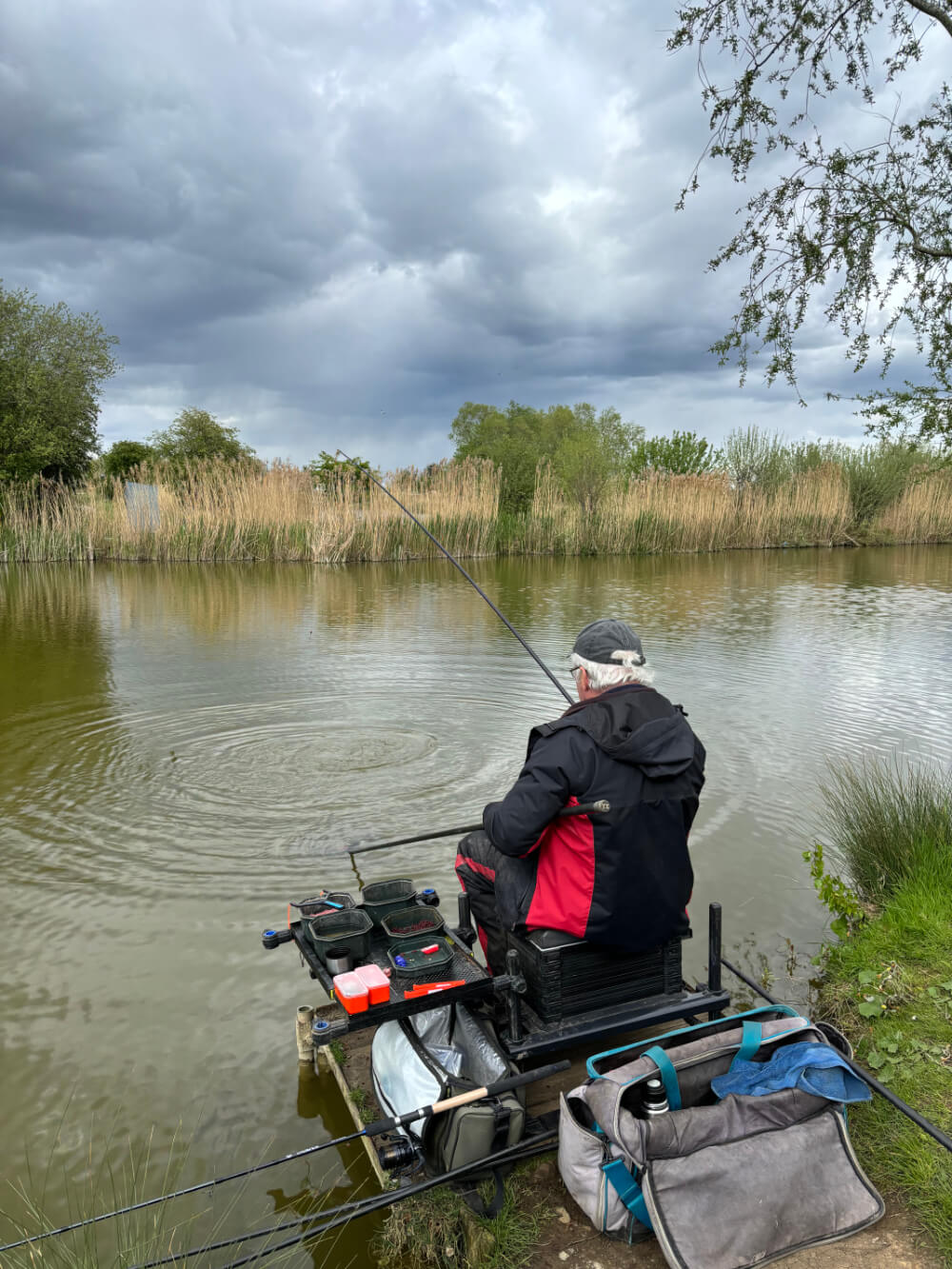Edge Tackle Tips and Tactics
Up Close
It’s easy to become preoccupied with long poles and rods that can cast huge distances, but they are not always needed on well-stocked waters. When there’s a good head of fish, one of the fastest and most efficient ways to catch them is close in. For this, I use either my Cadence CP800 Margin Pole or CP200 Whip, aiming to feed by hand, which is the quickest and simplest way of amassing big catches. I use the whip and a flick tip if it’s mainly small to medium sized species, while for anything bigger it will be the margin pole kitted out with a puller bung and elastic. It can be tricky deciding which to choose. The whip is faster when bagging big numbers and with a bit of luck can occasionally land the odd hefty intruder. But a much stronger margin pole with elasticated top kits is obviously a safer bet when more weighty species are expected.
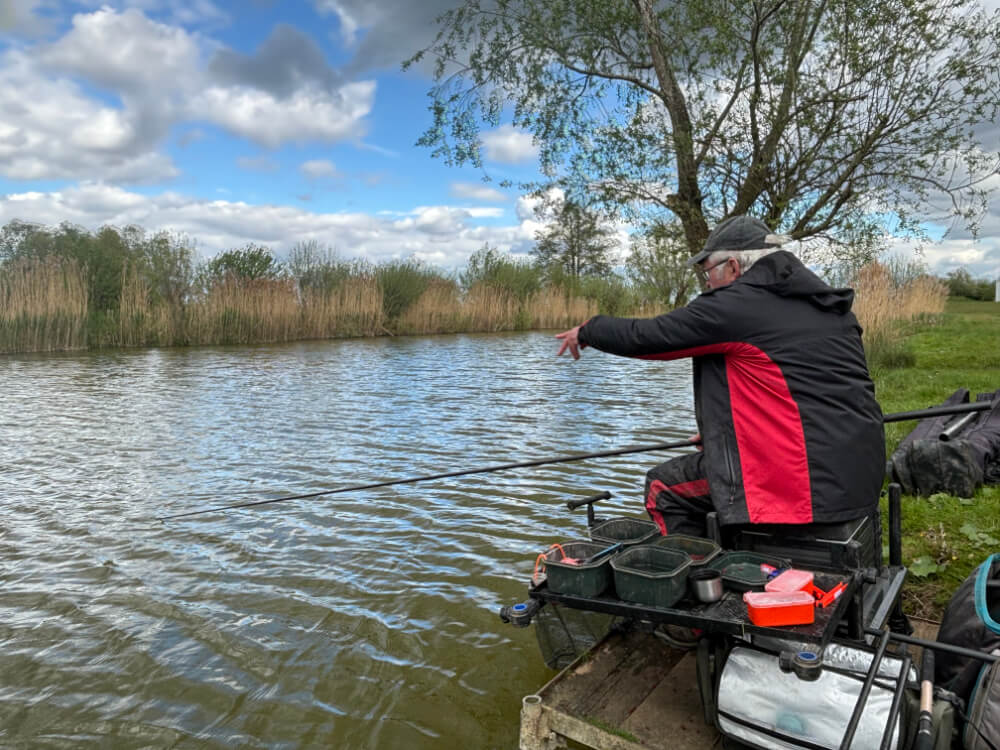
Side Tray
This Matrix Extending Side Tray is brilliantly versatile. I can adjust its size to suit the amount of bait and rig bits boxes required, depending on the type of venue. In this instance, it was clamped to the legs on my seat box. Staying rigid and sturdy enough not to sag while fishing from a tight platform, where the drop was too deep to use a pair of 25 mm supports that came with it. Taking the inserts out, it accepts 36 mm legs and comfortably fits on my box. I also have a couple of extra 25mm legs, so I can convert the tray into a freestanding table when there’s more space. This saves my seat box from getting too cluttered up with clamp on attachments, allowing more room to manoeuvre, while still keeping bait close to hand. In table mode it allows a useful channel for a landing net pole to slot into, ready to be speedily shipped straight out ahead.
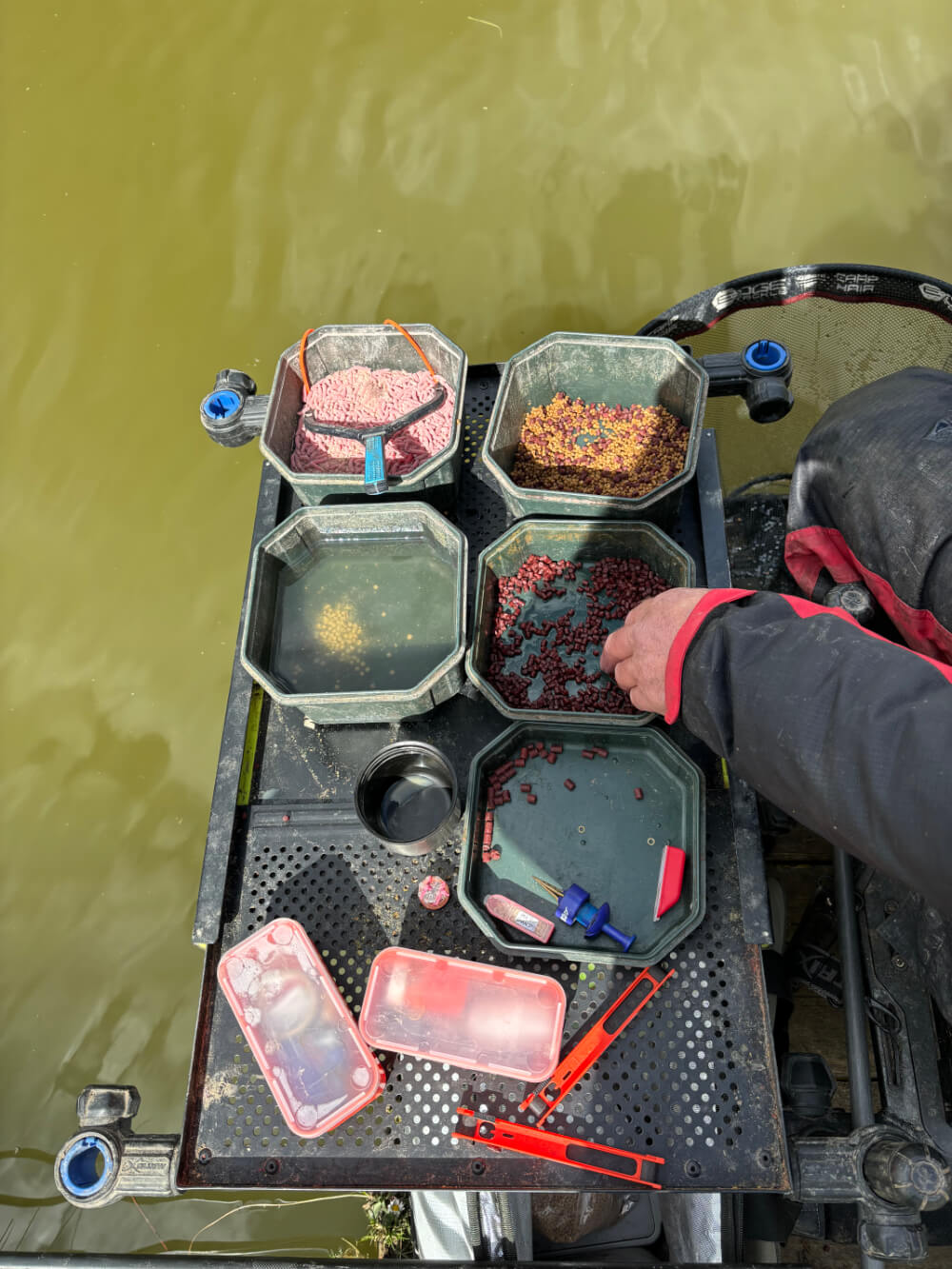
Pole Cup
I use this Drennan 150ml Polemaster Cup for most of my feeding requirements, when groundbait or larger quantities of loose feed are needed beyond comfortable throwing distance. It provides pinpoint accuracy and I prefer the flat base format, which can be parked fully loaded along the bank, ready to feed instantly when matches begin. This device comes into play at the start of sessions and for topping up swims with large amounts, loose feeding lesser helpings with a catapult regularly in-between. In this instance, I was cupping in a mixture of different sized pellets. The micros keep fish interested for longer, while the larger 4mms matched better with the size of hook baits being used. I often use this cup to drop in loose groundbait, instead of balling it. A super soft cloud of fine particles activates, swims a lot faster than harder helpings.
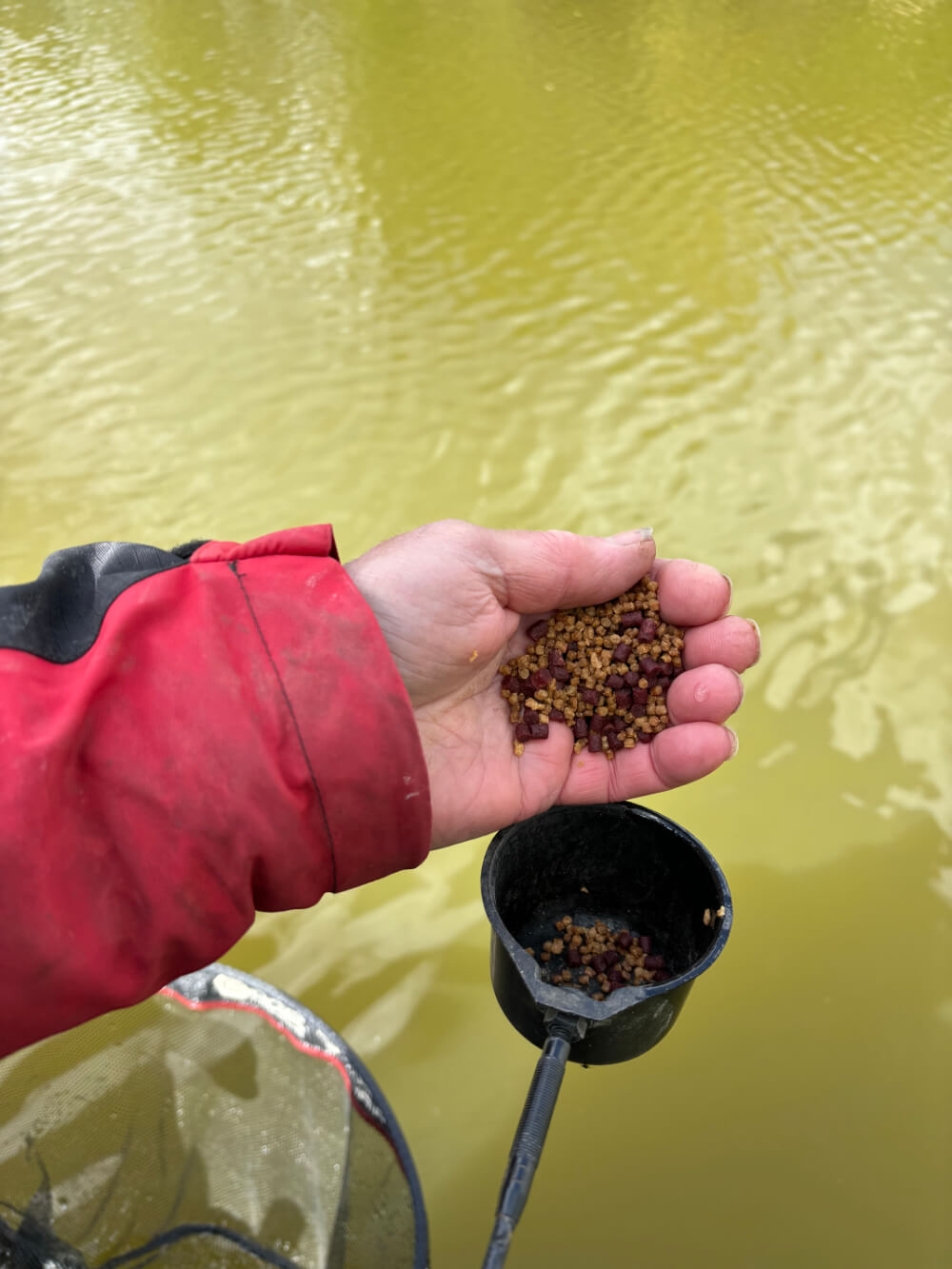
Dropping In
When the going is likely to be tough, it’s best to cup bait in sparingly and in a stealthy manner, but the reverse can apply on heavily stocked venues. Species like F1 carp in particular will home in if you make your feeding noisier, by dropping baits like pellets or balls of groundbait from a good height. All carp like the sound of bait hitting the surface and quickly move towards the disturbance, knowing it signals food. I’ve also found the extra noise pellets make attracts wild fish like chub and rudd, especially when they are catapulted a fair distance and from a good height. Maggots and casters make hardy any sound and land far more lightly, so alternatively introducing a few pellets can help the naturals work even better. Hemp has a similar effect, although pellets work out cheaper and more convenient, now being so universally popular.
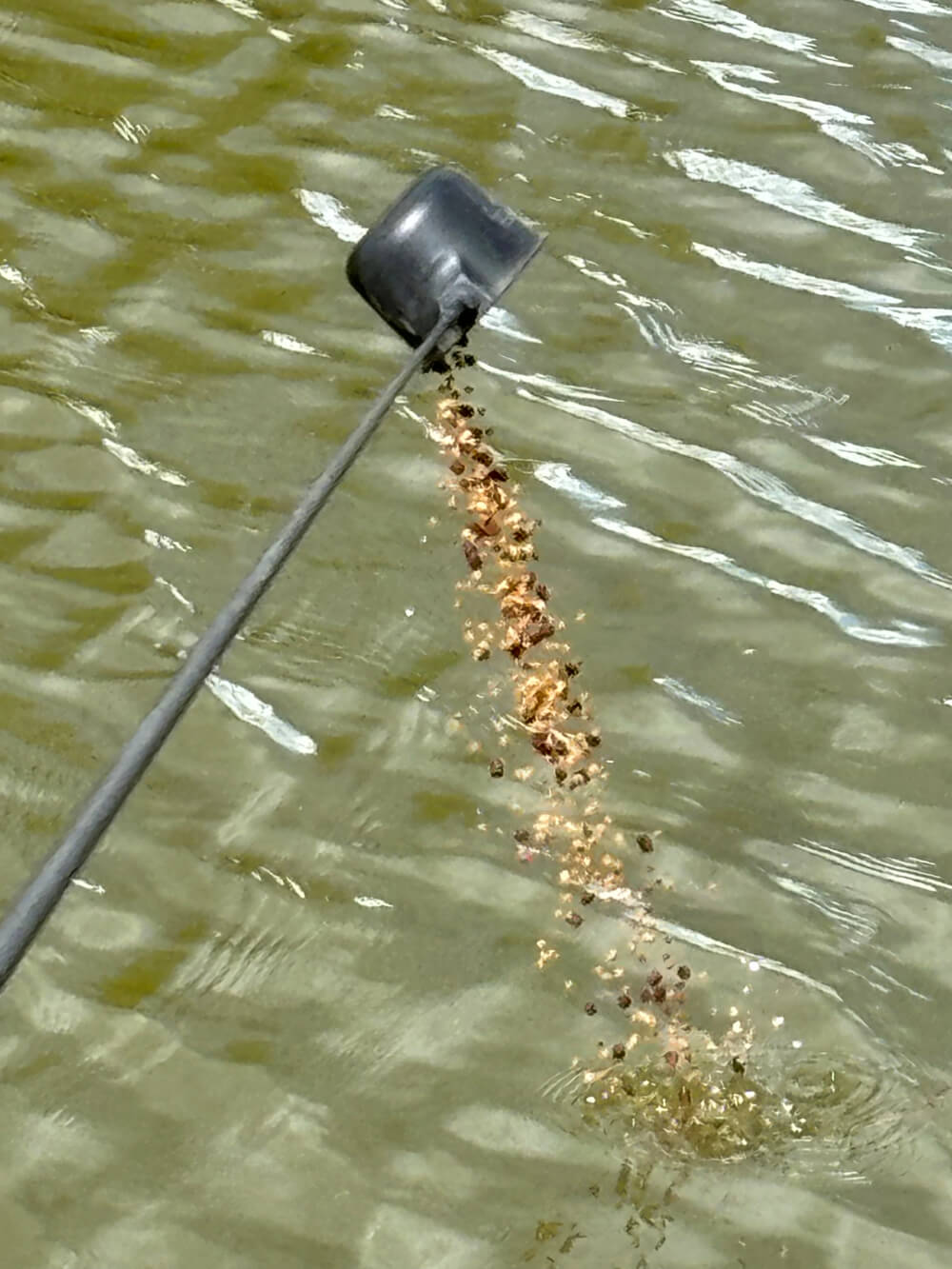
Choice Floats
I normally use at least three float rubbers on the stems of my pole floats, sometimes increasing to four with ultra heavy-duty rigs, which are likely to get a severe pounding from big fish. Having an extra one or two pieces of silicon tubing means the rig will keep working if any get broken. In this case, I’m using an Edge C2 Commercial Float, which is ideal for bagging up on shallow venues, featuring a thicker 1.75 mm tip that’s more buoyant. The latter is perfect for larger baits aimed at big fish, while I have back up C1s with thinner 1.25 mm tips, should bites prove difficult to hit or smaller species move in. These are tough floats with fibreglass stems, ideal for bagging situations. I also like the hollow tips because they are translucent, showing up far better than solid materials, which get harder to see in shadowy areas or under tricky light conditions.
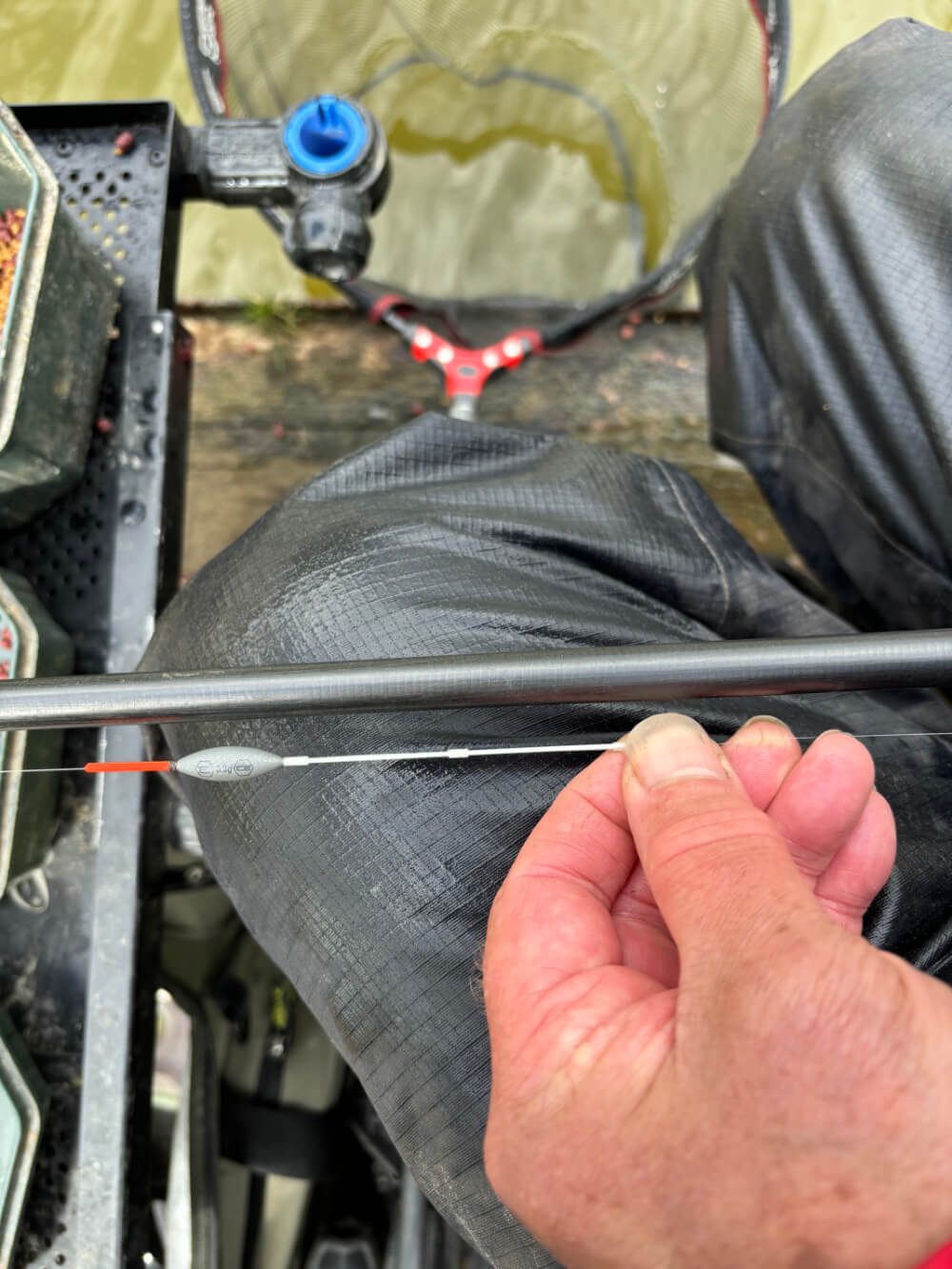
Nice Balance
It makes sense to have hook lengths lighter than the main line, whatever the type of tackle, so only the last few inches will be lost if a rig accidentally gets broken. I like to keep the relationship between main line and hook length reasonably close because with a big gap in diameters, thicker mono can bite through thinner stuff under heavy pressure. With running rigs you can get around this by attaching finer traces to the reel line via a small swivel, which is not as severe, also reducing line twist. With pole rigs, using the loop-to-loop system gets the safest connection. There are situations where the main line needs to be tough, but even then, it’s sensible to keep things balanced, so what’s being used is only a couple of gauges apart. In this case, 0.165 mm Premium Mono was attached to 0.13 mm, allowing a 0.15 mm option if required.
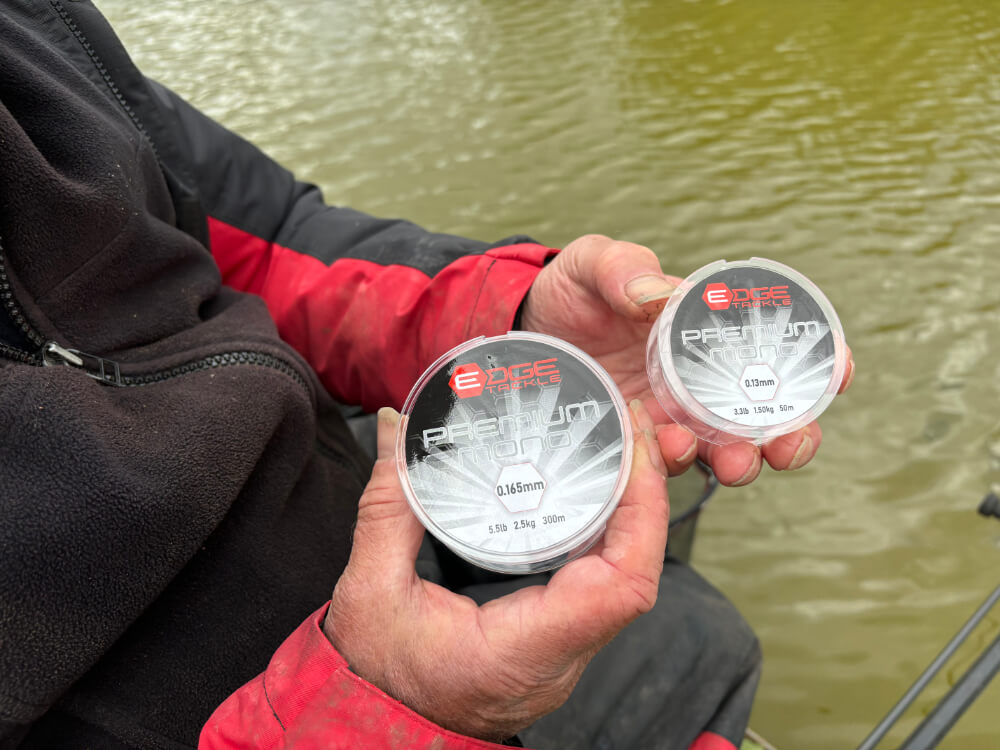
Elastic Sense
In similar fashion to the way main line needs to be sensibly balanced with hook lengths, the same applies to pole rigs and elastic. Keeping a good relationship allows maximum strength to be achieved with pole tackle, carefully matching line diameters to elastic gauges. This applies whether using solid or hollow types of shock absorber, much of which is down to personal preference. With lighter rigs, I think you get more feel factor with Edge Latex Hybrid Solid in its thinner diameters, while with the hollow version in thicker sizes, I believe it powers up better against big fish. Similar performance can probably be reached according to the way either type of elastic is tensioned up, but as I say, it’s a personal thing. I certainly can’t fault Edge Pole Elastic, which, in my opinion, for its price point is easily as good as more expensive products.
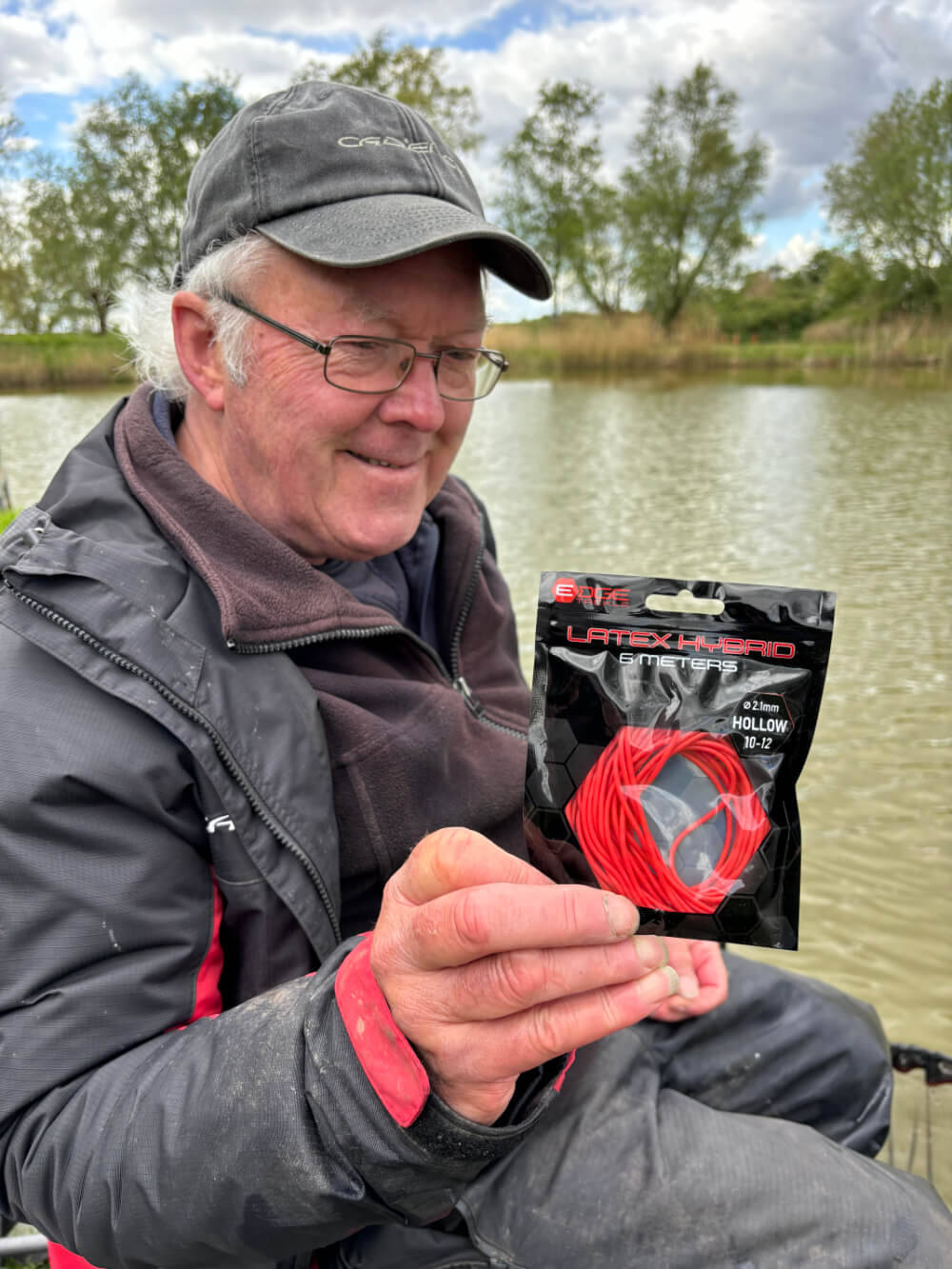
Simple Banding
I’ve never got on well with bait band rigs that involve looped hairs, mainly because I like to keep switching baits, most of which require direct hooking. It’s fiddly quick changing hook lengths, also installing a new pellet into a hair-rigged band, so I take a much simpler approach. Modern latex bands are super elastic and hardly noticeable when stretched around a pellet, so I pre-band enough hard hookers for each session. I can then simply thread each banded bait straight onto the bend of my hook, which remains suitable for any other offerings like maggots or casters. I can change baits quickly, without any need to mess around and waste time with a banding tool. Another aspect I’ve noticed with hair-rigged pellets, is how species other than carp often get bumped off, especially skimmers. That happens less with my more direct way.
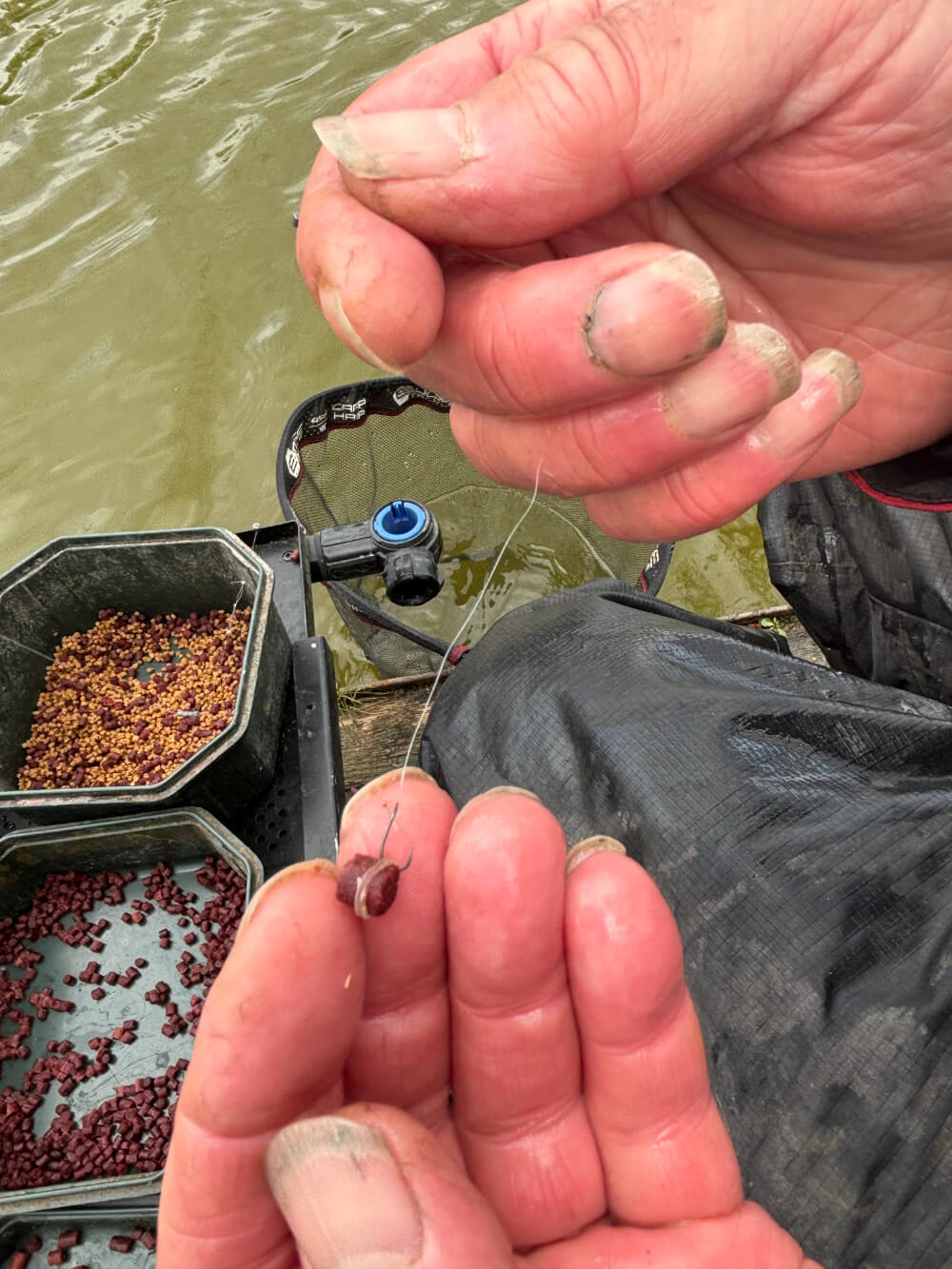
Net Logic
It’s a good idea to have your landing net head resting on one side of a keepnet’s top ring, ready to be shipped out fast. When not in use, small fish can be swung in over the head of the landing net, so none get lost any if they twist off the hook as you try to grab them. There are, of course, places where you can’t risk having an expensive landing net handle spread across the ground behind you, such as busy towpaths. However, in that instance, it’s still possible to have the two nets positioned together, by laying the landing net handle along the edge of the bank. I also like to position the head of my keepnet at a level where I can use it to rest a float rod on. I achieve this by utilising the angle lock and a bank stick, or with a keepnet arm clamped onto a front seat box leg. If you fit rubber O-rings to the screw threads on both nets, they will lock more firmly.
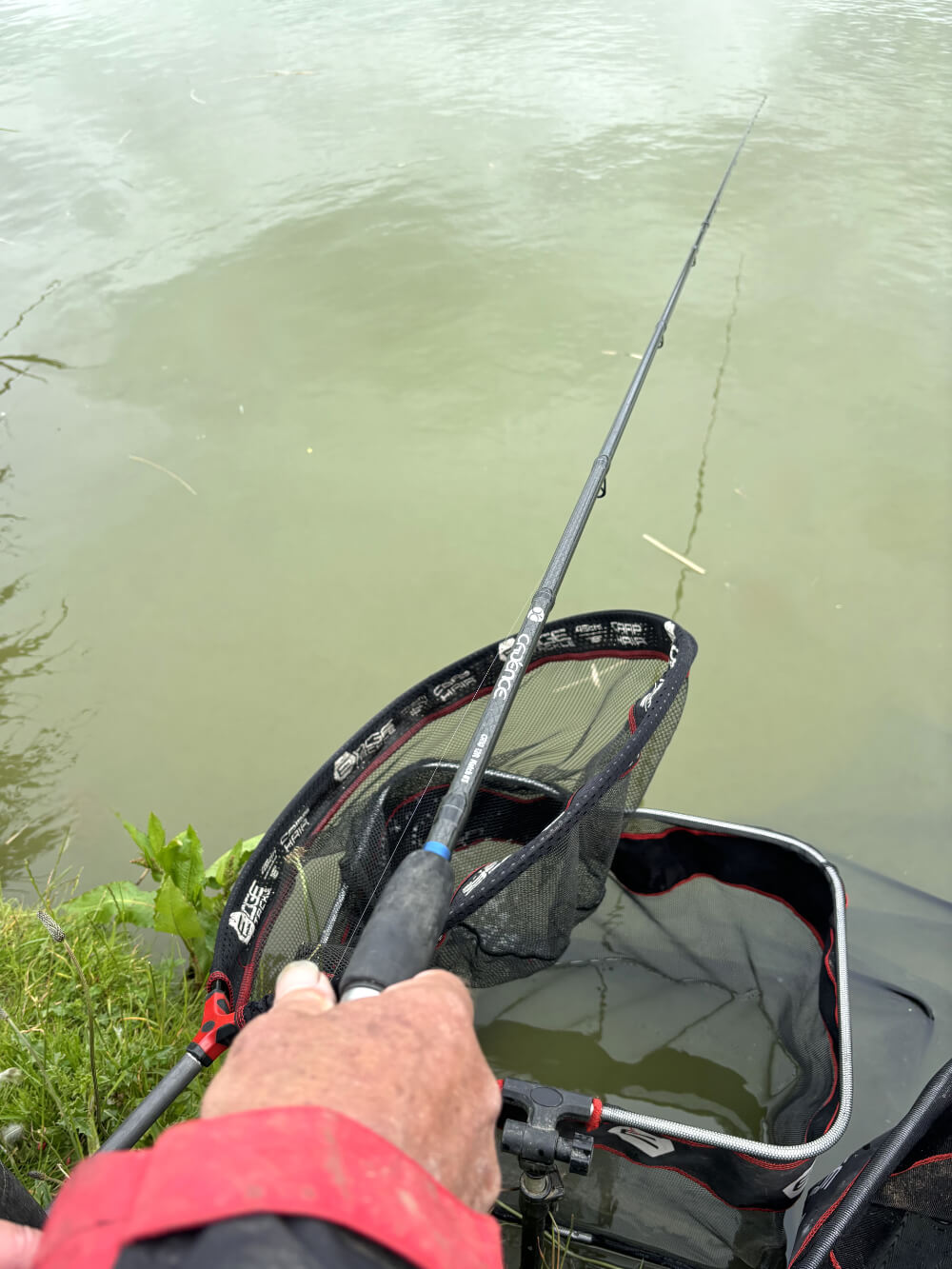
Clear Thinking
Clear polycarbonate wagglers cover lots of different float fishing requirements, whether targeting still or running water species. The Edge Crystal Clear Wagglers include insert and straight designs. I use the inserts mainly on stillwaters, with heavy lockers and light shotting down the rig. This format finds where the fish are, whether feeding shallow or at full depth, allowing the rig to be adjusted to suit. The inserts are fixed, so they don’t get lost, which I prefer with such an active way of fishing. I use a swivel float adaptor to attach wagglers to the main line anyway, allowing sizes and tip colours to be switched in seconds. The straight models come more into play on rivers, having more buoyant tips that don’t drag under easily. I particularly like the shorter versions for shallow pellet presentation when small river chub respond to that type of bait.
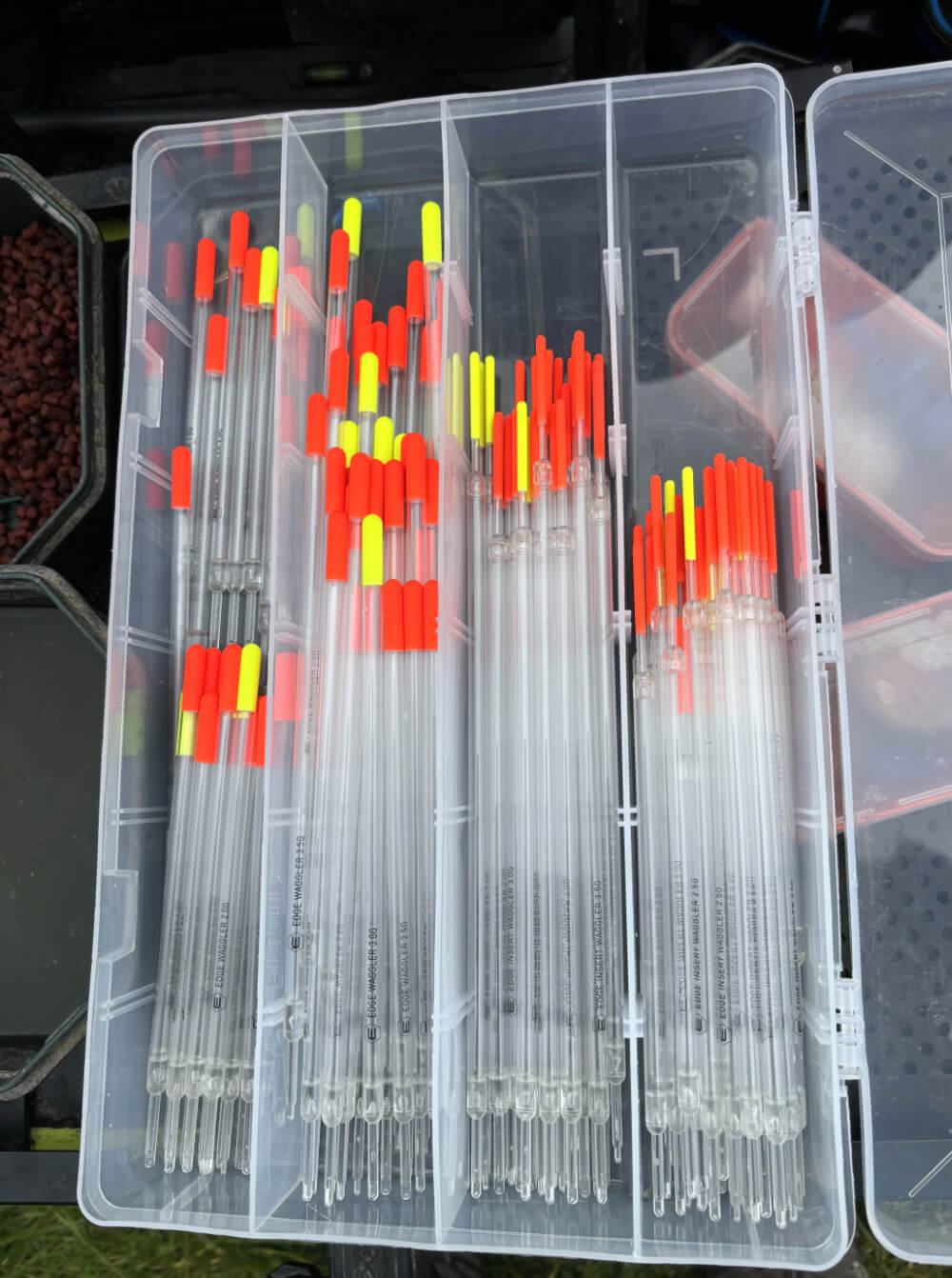
Playing Clever
It’s a good idea to pre-decide a direction to try to steer big fish in, once they have been hooked, to minimise chances of disturbing the rest of a shoal. This is most important with pole tackle, where simply pulling something large and angry up to the surface over your feed area is not a good idea. Gently coaxing fish away from the bite zone is much better than trying to bully them straight up, which I see many novices doing. Leading them away from the feed area before increasing the pressure, keeps the most important part of your swim from being badly disturbed, so it doesn’t take long to get another response. It also helps to land big fish quicker by not alarming them straight away. You only have to watch top carp baggers pole fishing to see that, almost fooling big fish into landing net range by coaxing, rather than strong-arming them.
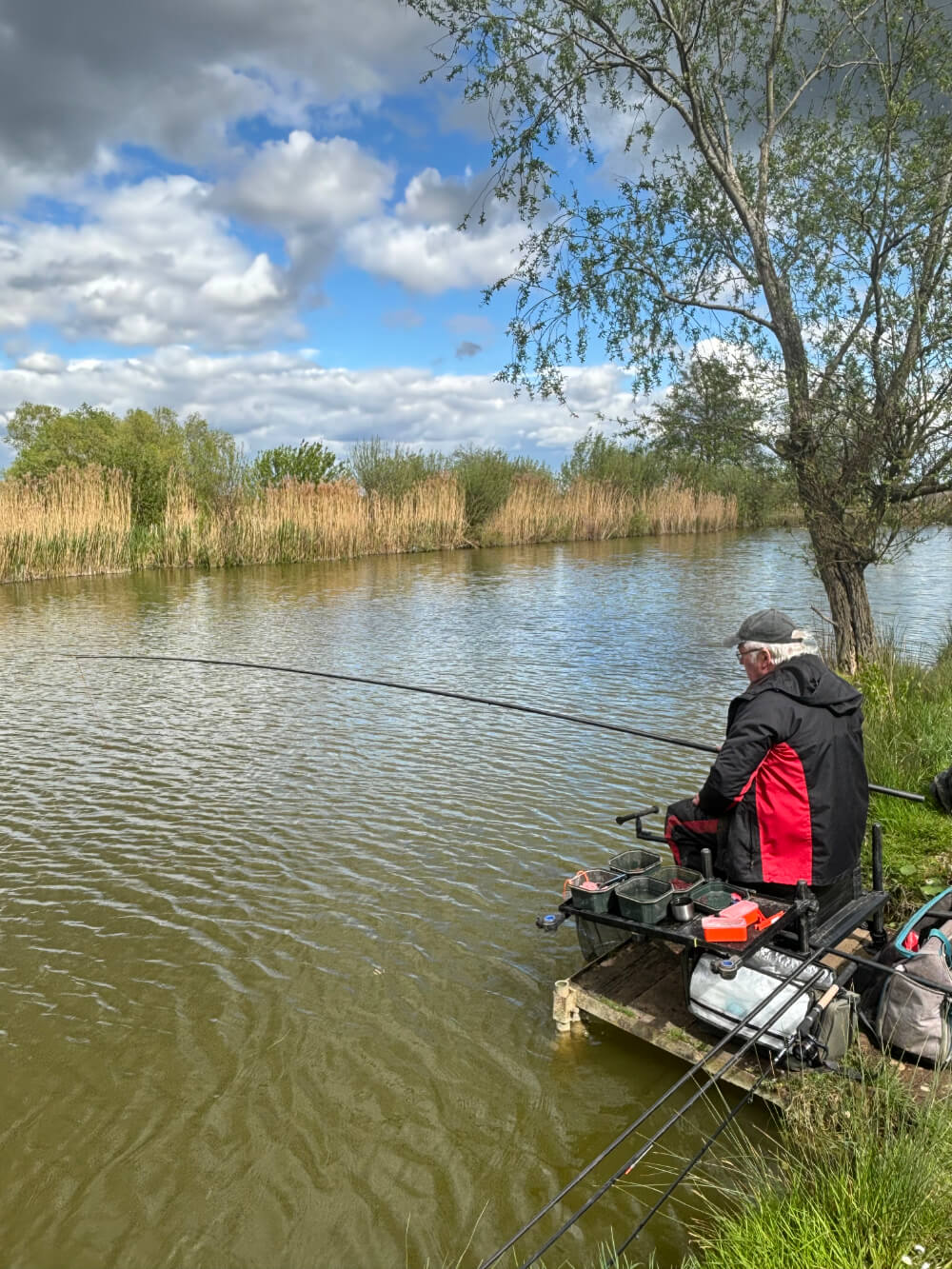
Adding Up
Little things can make a huge difference to what you catch. It might be a confidence booster like using a special additive, or trusted rig. But no matter how positive you are, it pays to stay versatile, picking up on what other anglers are doing. There are some streetwise people who catch more than the rest by the way they feed and the tactics they employ. It might be to do with how they set up their fishing station, or switch between different zones, having reserve get-out-of-trouble options. If you see someone consistently doing well, it can pay to ask questions. I enjoy occasionally watching big matches, noting the tackle and bait top guys are using, trying out their winning tactics myself. One of the most consistent winter league anglers in my area confided that it was simply about bait, telling me he always fed more than those around him!
